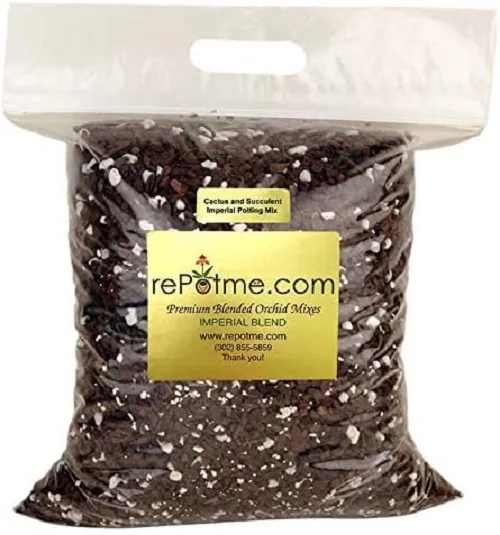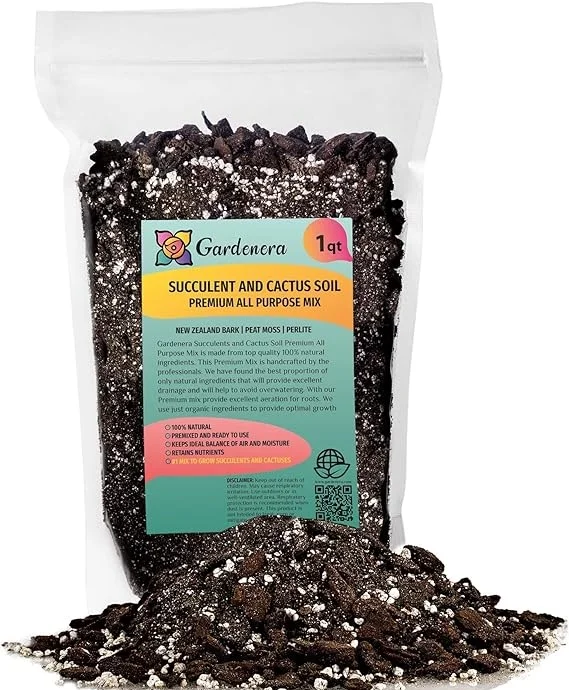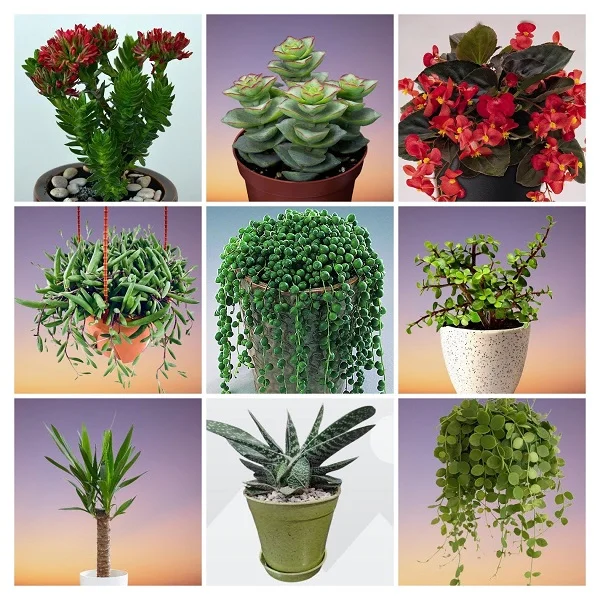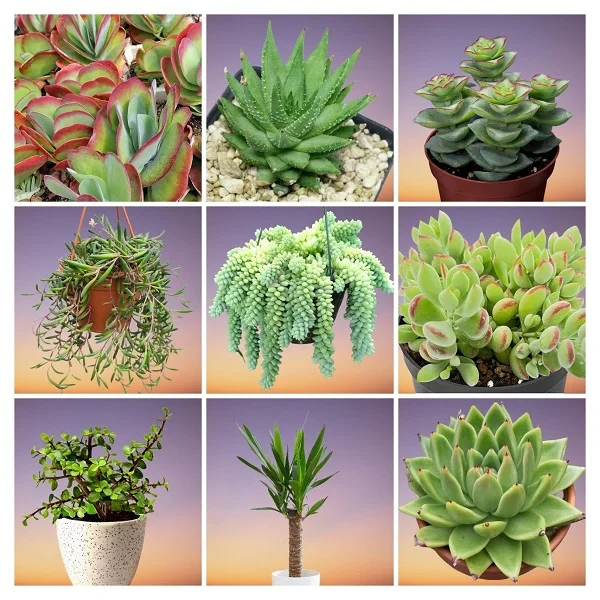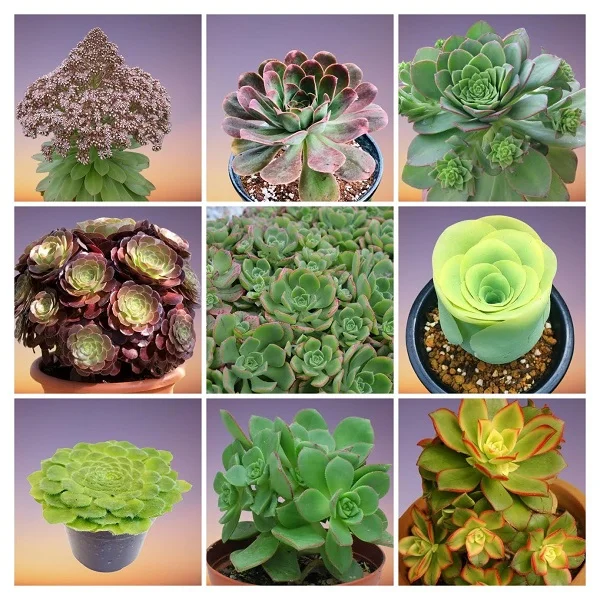How to Grow, Care and Propagate Houseleeks (Sempervivum)
Some links in this post may be affiliate links
Houseleeks (Sempervivum) require bright light with 4-6 hours of direct sunlight, average warmth, average humidity and moderately moist, rich, well-drained, succulents soil coupled with fortnightly feeding in the growing season.
Houseleeks also called Liveforever or Hens and Chicks are popular succulents plants which form mats composed of tufted leaves in rosettes.
Sempervivums are low-growing, compact plants reaching a height of 4 inches only and each plant grows for several years before flowering. They are some of the best plants for the limited spaces in the home and office.
The color of flowers is reddish, yellowish, pinkish or rarely whitish. After flowering, the Liveforever dies, leaving many offsets it has produced during its life and hence the common name, 'Liveforever'.
These offsets that form around the base of the plants have also given Houseleeks the common name, 'Hens and Chicks'. They share the name 'Hens and Chicks', with other genera like the similar Echeverias which bear a rosette of short, beautiful, tightly packed leaves on short stems which are covered with a white bloom, short hairs or a waxy coating.
The species in the Sempervivum genus are not easy to identify as even one single clone can look very different under various growth conditions or different times of the year.
Sempervivums are very similar and closely linked to each other. Numerous cultivars have been created but a lot of them are not different from each other. The main interest of these cultivars is not their flowers but the form and color of the rosette-leaves.
Sempervivum are closely related to Aeoniums (Tree Houseleeks) which bear succulent, glossy, spoon-shaped leaves typically arranged on a basal stem in a dense spreading rosette.
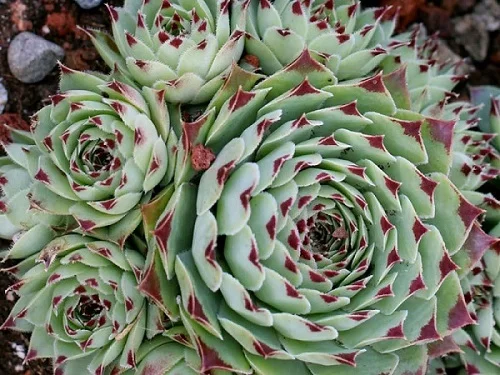
Botanical name: Sempervivum
Family: Crassulaceae
Subfamily: Sempervivoideae
Common name: Houseleeks, Liveforever, Hens and Chicks
Origin
Sempervivum is a genus of about 40 species of flowering plants which are endemic from Morocco to Iran, through the mountains of Iberia, the Alps, Carpathians, Balkan mountains, Turkey, the Armenian mountains, northeastern part of Sahara Desert and the Caucasus.
Houseleeks are completely hardy due to their ability to store water in their thick leaves which allows them to live on sunny rocks and stony places in the mountain, subalpine and alpine belts.
Toxicity
Sempervivum are non-toxic to humans and pets. They are safe to grow indoors.
Where to Buy
If you are looking to add this plant to your collection, Houseleeks are available online on Etsy (Link to Etsy).
Sempervivum Care Indoors
Houseleeks (Sempervivum) flourish in bright light with 4-6 hours of direct sunshine, average warmth of 16-280C, average humidity of 50-55% and moderately moist, fertile, well-drained, succulents soil coupled with fortnightly feeding during the growing season.
Sempervivum require pruning to keep the plant neat and minimize pest and disease infestation. Repotting is only needed when the plant becomes pot-bound. Keep reading for more on these growing conditions and how to achieve them.
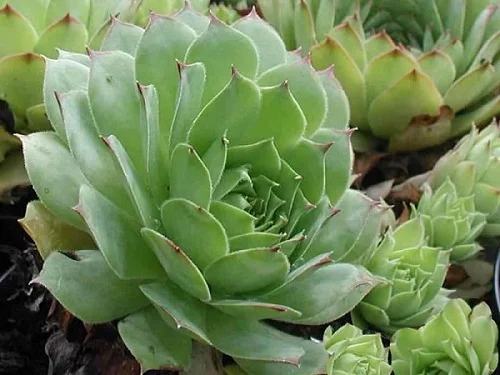
Light Requirements
Houseleeks grow best in bright light with at least 4-6 hours of direct sunlight. However, avoid exposing it to hot midday sunshine before acclimatizing it as it can get sun scorched.
Where the natural lighting is inadequate, you may grow the plants under grow lights. Check out these full spectrum grow lights on Amazon.
Regularly rotate the pot to ensure that the plant receives light on all sides for even growth and to prevent lopsided growth.
Watering
Water Houseleeks thoroughly during the growing season and allow the top 2-3 inches of soil to dry out between waterings. Cut down on watering during the cold season and maintain the soil barely moist as growth is minimal at this time.
Avoiding wetting the center of the rosette as it can lead to rotting. Water from the bottom instead. Use water that is at room temperature to water to avoid plant shock as it can lead to reduced growth.
Ensure that the pot has a drainage hole to prevent the soil from getting soggy as it can lead to rotting and death of the plant.
Temperature and Humidity
Average warmth of 16-280C during the growing season is ideal for Houseleeks. Keep it away from cold drafts as they cause reduced growth.
Sempervivums have no need for extra humidity; average room humidity of 50-55% is good for these plants. Ensure that there is good air circulation for the plants to prevent fungal disease infestations.
Potting Medium
The best potting medium for Houseleeks should be rich in organic matter, loose and free-draining to prevent it from getting soggy. It should be loose enough to allow water to drain out fast enough. Cactus and succulents mix is ideal for this plant as it drains easily.
Fertilizer
Feed Houseleeks every 2 weeks during the growing season with a balanced, liquid fertilizer. Stop feeding in the dormancy stage (cold season) as growth is minimal at this time.
Repotting
Houseleeks have a small root system so frequent repotting is not necessary. Repot at the beginning of the growing season only when it has become crowded in its current pot.
Use a pot 1 size larger than the current one and one that has a drainage hole to prevent the soil from getting soggy as it can lead to rotting. Use a shallow pot and be careful not to bury the stems to prevent rotting. Check out these succulents pots on Amazon.
Pruning
Pruning Houseleeks is easy. Remove dead and diseased leaves to keep the plant neat and also reduce pests and disease infestations.
Propagation
Houseleeks (Sempervivum) can be propagated at the beginning of the growing season from offsets which form at the base of the plant.
How to propagate Houseleeks from offsets
Carefully seperate the Houseleek offsets from the mother plant. Choose an offset which has several leaves.
Allow the offsets to dry (callus) for 1-3 days before potting to prevent rotting.
Pot each offset in its individual pot in moist free-draining soil and place the set up in a warm, brightly lit place away from direct sunlight.
Water sparingly, only when the soil is dry until the Houseleek is well established and avoid soggy soil as it can lead to rotting.
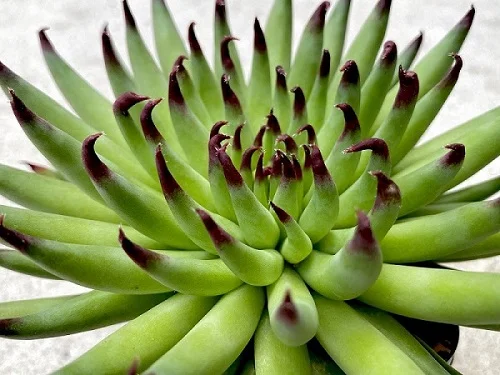
Sempervivum Growing Problems
Houseleeks (Sempervivum) growing problems include loss of leaf color, rotting, yellowing, shrivelled leaves, pests and diseases among others. Keep reading for more on these problems and how to fix them.
Diseases
Common diseases in Houseleeks are crown and stem rot disease and leaf spot disease which are promoted by wetting of the center of the rosette. Avoiding wetting the center of the rosette to prevent rotting and water from the bottom instead.
Pests
Common pests in Houseleeks are mealy bugs, scales and spider mites. Isolate the affected plant to reduce spread to other plants and treat it for the pests. Learn how to identify and get rid of pests in houseplants.
Loss of leaf color
Loss of leaf color in Houseleeks is due to too little light. Move the plant to a brighter spot where it will receive bright light with at least 4-6 hours or instal grow lights if the natural light is inadequate. Check out this post on understanding light for houseplants.
Rotting base, yellowing and shrivelled leaves
Rotting plant base followed by yellowing and shrivelled leaves in Houseleeks is an indication of basal stem-rot disease which is brought about by overwet conditions. Decrease watering during the cold season as growth is minimal at this time. Ascertain that the pot has a drainage hole and that the soil is free-draining to prevent the soil from getting soggy.
You liked it? Share on social media.
Related Content
Amazon Associates Disclosure
Homeplantsguide.com is a participant in the Amazon Services LLC Associates Program, an affiliate advertising program designed to provide a means for sites to earn advertising fees by advertising and linking to amazon.com.
